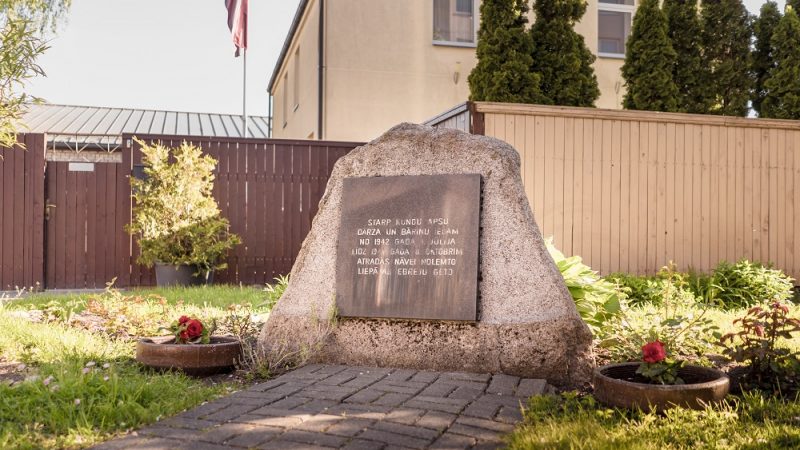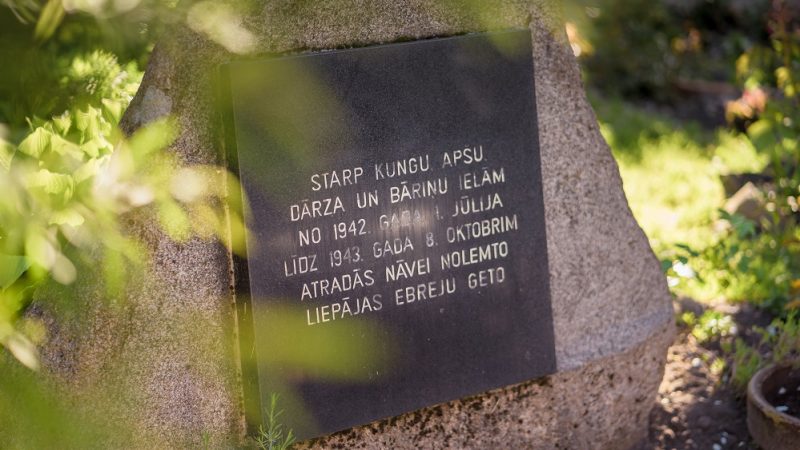Liepāja Jewish ghetto was set up on July 1, 1942, and all Liepāja residents of Jewish nationality were ordered to move to the closed ghetto territory located in between Dārza, Apšu, Kungu and Bāriņu streets, forbidding them to leave it without permission, whereas the local population was not allowed to enter it or maintain contacts with ghetto people. About 800 people, who survived after the 1941 massacres lived on the territory of the ghetto. The ghetto was overcrowded, living conditions were harsh, and the daily food ration was insufficient.
For the most part the ghetto prisoners worked as artisans or unskilled labourers. Every early morning, those assigned to forced labour gathered in groups at a specific place in the ghetto. Each group was compiled depending on where they were working. Prisoners would leave in the morning and return in the evening, and every prisoner who left the ghetto had to wear a tag. They walked to and from work in formed alignments accompanied by the Jewish group leader. This fact distinguished the Liepāja ghetto from other ghettos, where the Germans demanded that the group leader must not be of Jewish nationality. The ghetto prisoners had to work from 16 to 18 hours a day, spending most of their time outside the ghetto.
A small school (Beit Midrash) was established on the territory of the ghetto, a library and a small clinic were opened as well.
The ghetto was liquidated in October 1943, and all the surviving Jews were transported to the Kaiserwald concentration camp in Rīga.
In the territory of the former Liepāja ghetto a memorial stone has been erected, it bears an inscription in Latvian “From 1 July 1942 until 8 October 1943 the ghetto of the doomed Liepāja Jews was located between Kungu, Apšu, Dārza and Bāriņu Street”.

